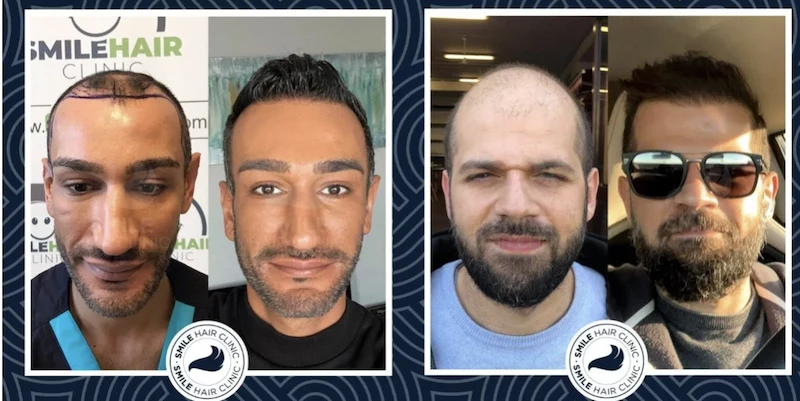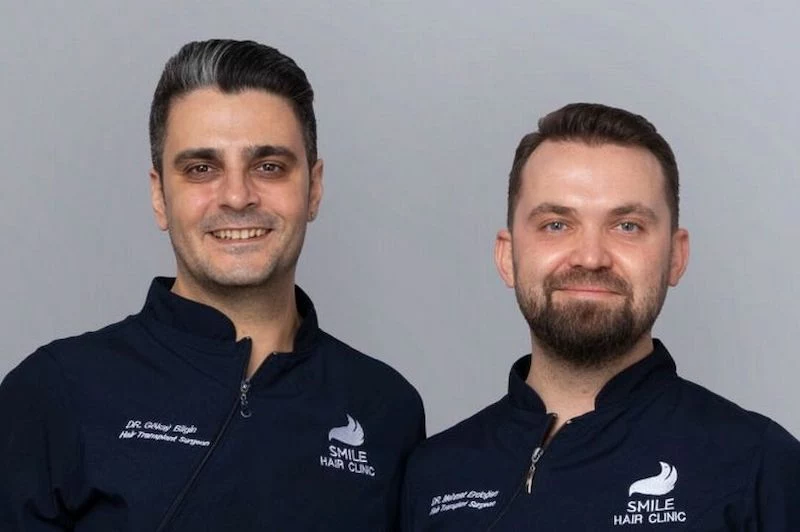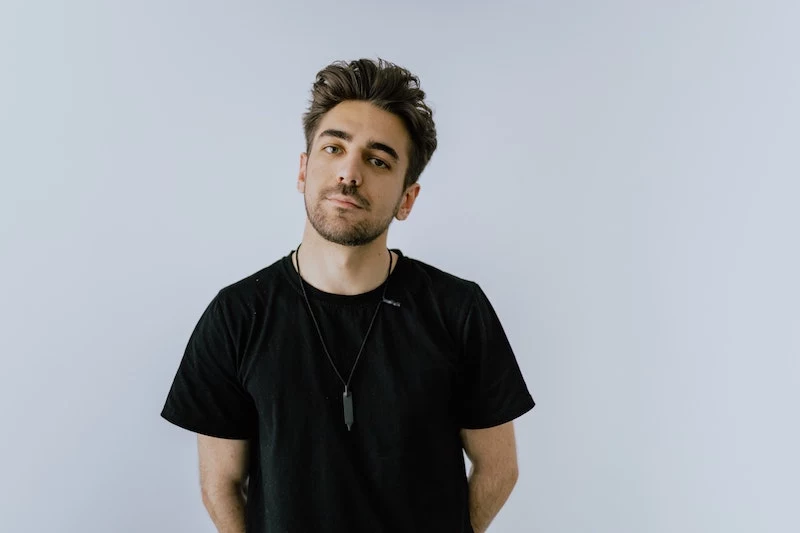Thinking About a Hair Transplant in Istanbul? The Unfiltered Guide You Need to Read First
For well over a decade, I’ve been in the trenches of the hair restoration world. I’ve done it all—consulting with anxious patients, training up new technicians, and working side-by-side with surgeons to perfect our craft. And in that time, Istanbul has exploded into a global hub for this work. People from all over the planet are flying in, drawn by one massive magnet: the price.
In this article
Let’s just get that out of the way. For a quality procedure in Istanbul, you can expect to pay somewhere between $2,500 and $7,000. For a similar session in the US, UK, or Western Europe, you’re easily looking at $10,000 to $25,000. That difference is life-changing for many people. But here’s the deal: cost is only part of the story. The most important thing is quality, because a botched job isn’t just a bad haircut. It can leave you with unnatural results, permanent scarring, and a depleted donor area with no second chances. My goal here isn’t to sell you on a specific clinic. It’s to give you the insider knowledge to tell a first-rate medical team from a high-volume production line.

First, a Little Science: Why This Even Works
To really get what makes a transplant successful, you have to understand the basic biology behind it. It all comes down to a concept called “donor dominance.” The hair follicles on the back and sides of your head are genetically built to resist DHT, the hormone that causes most common pattern baldness. When these tough little follicles are moved to a bald spot, they don’t forget where they came from. They keep their genetic programming and will continue to grow for life.
This is why your donor area is pure gold. It’s a limited resource. A good team thinks about your long-term future, not just this one procedure. They harvest follicles strategically, leaving the donor area looking natural and preserving options for any potential future work. On the flip side, a careless or rushed team might over-harvest, creating patchy or “moth-eaten” spots. Trust me, I’ve consulted on repair cases like this, and it’s heartbreaking and incredibly difficult to fix.

By the way, here’s a quick fact a lot of places won’t tell you: your donor area is finite. Over your lifetime, you can typically only donate about 25-35% of your permanent follicles before the area starts looking noticeably thin. That’s why a clinic promising “unlimited grafts” should be a huge red flag.
Oh yeah, and patience is a must. After the procedure, most of the transplanted hairs will fall out in a few weeks. This is called “shock loss,” and it’s totally normal. The important part—the follicle—is safe and sound under the skin. New growth starts to peek through around month three or four. You won’t see the real, final result for a good 12 to 18 months. It’s a marathon, not a sprint.
Decoding the Techniques: FUE, Sapphire, and DHI
You’re going to see a lot of fancy acronyms thrown around. Let’s cut through the marketing fluff and talk about what they actually mean for you.

The old method of taking a big strip of scalp (FUT) is pretty much out of style in Istanbul because it leaves a linear scar. Today, it’s all about less invasive methods.
- Follicular Unit Extraction (FUE): This is the foundation of almost all modern transplants. Instead of a strip, the team extracts individual follicular units (tiny bundles of 1-4 hairs) one by one using a tiny, hollow punch. Most clinics use a motorized punch because it’s fast and efficient. In the right hands, it’s fantastic. The only downside is that a clumsy technician can damage follicles (a high “transection rate”), so the team’s experience is everything.
- Sapphire FUE: This is an upgrade to FUE, not a whole new thing. The difference is the tool used to make the little cuts where the new hairs will go. Instead of steel blades, it uses blades made from super-sharp synthetic sapphire. These blades can create a V-shaped channel, which can mean less tissue trauma, quicker healing, and the ability to pack hairs a bit tighter. From my experience, patients do tend to have a little less redness and scabbing in the first week. But remember, a master artist can create a masterpiece with a normal brush, and a novice can’t be saved by the most expensive one. The skill of the surgeon making the incisions matters more than the blade itself.
- Direct Hair Implantation (DHI): This technique changes the implantation step. The extracted hairs are loaded into a pen-like tool (often called a Choi Pen) that both makes the incision and places the graft in one single motion. The big advantage? The grafts spend less time outside the body, which can boost their survival rate. DHI offers incredible control over the angle and direction of each hair, making it a favorite for crafting super-natural hairlines. The tradeoff is that it’s slower, so it’s usually best for sessions that are under 3,500 grafts or so.
A little-known pro tip: Ask the clinic what solution they use to store the grafts. Once a follicle is out of your body, it’s on the clock. Cheap clinics use simple saline. Top-tier clinics use a specialized, cooled preservation solution like HypoThermosol, the same kind of stuff used for organ transplants. Their answer to this one question tells you volumes about their commitment to quality.

Your Pre-Flight Checklist: How to Vet a Clinic from Home
Okay, this is the most important part. You have to do your homework before you even think about booking a flight. Here’s how to do it right.
First, the virtual consultation. They’ll need clear photos. To get the best shots, have someone else take them for you in good, bright, indirect light. Don’t use a selfie camera. They need five specific views: front with your hairline pulled back, a top-down view of your crown, both side profiles, and a clear shot of the donor area at the back of your head.
A good consultation should feel like a real medical appointment. A clinic that just gives you a price without asking about your medical history or your expectations is a major red flag.
Your 10 Must-Ask Questions:
Don’t be shy. You are hiring a medical team. Get on a video call and ask these directly.

- Who will be designing my hairline? Is it the doctor?
- Will the main doctor be the one making the incisions in my recipient area? (This is a critical step!)
- How many other patients will the doctor be overseeing on my surgery day?
- What is your team’s average transection (graft damage) rate? (A good answer is under 5%).
- What solution do you use to store the grafts while they are outside my body?
- Can you show me at least 3 before-and-afters of patients with a similar age and hair loss pattern to mine?
- What is your plan for my long-term hair loss?
- Who handles the aftercare once I am back in my home country?
- Is the facility a licensed hospital?
- What is your policy if the results are not what we agreed upon?
Their answers—and how willingly they give them—will tell you everything you need to know. High-pressure sales tactics or vague responses are your cue to walk away.
What to Expect on Surgery Day (The Blow-by-Blow)
The whole process can feel mysterious and a bit scary, so let’s walk through a typical day.
- 8:00 AM – Arrival & Final Chat: You’ll arrive at the hospital, meet the team, and have a final consultation with the doctor. This is your last chance to confirm the plan.
- 9:00 AM – The Art Project: The doctor will draw your new hairline directly on your forehead with a marker. They should hand you a mirror and ask for your feedback. Don’t be afraid to speak up! This is your face, after all.
- 9:30 AM – Prep & Anesthesia: You’ll change into a gown, and they’ll shave your head. Then comes the part everyone wonders about: the anesthesia. Let’s be real, the injections are the most uncomfortable part of the day. It’s a series of small stings across your scalp. It’s not pleasant, but it’s over in about 10-15 minutes. After that, you won’t feel any pain, just some pressure and movement.
- 10:00 AM – Extraction Begins: You’ll be lying face down while the team extracts the follicles from your donor area. You can usually listen to music or even nap. This takes a few hours.
- 1:00 PM – Lunch Break: You’ll get a break to eat and stretch your legs.
- 2:00 PM – Implantation: This is the second half. You’ll be sitting up or reclining while the team makes the incisions and places the grafts into your recipient area. Many clinics have a TV in the room, so you can watch movies.
- 6:00 PM – All Done!: The team will bandage your donor area, explain the immediate aftercare, and you’ll be taken back to your hotel to rest.
Recovery, Aftercare, and Your Shopping List
The first 10 days are absolutely critical for your results. The clinic does the surgery, but the aftercare is on you. Follow their instructions to the letter!
Heads up! A quick trip to a local pharmacy or packing these ahead of time will make your life much easier:
- A travel neck pillow: You have to sleep on your back, semi-upright, for about a week. This is a lifesaver.
- Button-front shirts: You can’t pull anything over your head. Think zip-up hoodies and button-downs.
- Saline spray: A simple sterile saline spray (like what you’d use for nasal congestion) is great for gently misting your grafts every hour or two to keep them hydrated.
The first hair wash is a delicate procedure. It usually goes like this:
- Step 1: Gently dab or pat the provided lotion onto the recipient area and let it sit for about 30-45 minutes to soften the scabs.
- Step 2: Use a cup to pour lukewarm water over your head. NEVER use direct shower pressure on the new grafts.
- Step 3: Lather the special shampoo in your hands first, then gently pat the foam onto your scalp. Don’t rub!
- Step 4: Rinse again by gently pouring water over your head until all the suds are gone. Pat the donor area dry with a clean towel and let the recipient area air dry.
Finally, be prepared for the swelling. It’s normal for your forehead and even your eyes to get puffy for a few days. It looks weird, but it goes away. A well-planned transplant in Istanbul can be an amazing, confidence-boosting decision. It just starts with being an educated, prepared patient. You’re not just buying a procedure; you’re choosing a partner for your restoration journey.
Inspirational Gallery
FUE (Follicular Unit Extraction): The classic method where a surgeon makes tiny incisions first, and technicians then place the harvested grafts into them. It’s robust and highly effective for covering large areas.
DHI (Direct Hair Implantation): A newer variation where each graft is loaded into a special implanter pen (like a Choi pen) and injected directly into the scalp without pre-made incisions. It offers excellent control over angle and direction.
Many top clinics, like Dr. Serkan Aygin’s, offer both, choosing the best technique for different parts of the scalp.
The hairline is the artist’s signature. A perfectly dense crown with a ruler-straight, low hairline is the number one sign of an inexperienced team. True artistry lies in creating soft, natural-looking micro-irregularities with fine, single-hair grafts at the very front.
Don’t be shy during your remote consultation. The quality of the answers to these questions will reveal everything:
- Who, specifically, will be designing my hairline and performing the incisions—a doctor or a technician?
- How many patients does the surgeon operate on per day? (One is ideal; more than two is a red flag).
- Can you show me high-resolution results of patients with a similar hair loss pattern and age to mine?
- What does the post-operative care package include, and who is my point of contact after I leave Istanbul?
What about the ‘ugly duckling’ phase they don’t show on Instagram?
Be prepared for it. Around 2-4 weeks after the procedure, you’ll experience ‘shock loss,’ where most of the newly transplanted hairs fall out. This is completely normal! Your scalp is healing, and the follicles are entering a new growth cycle. Real, visible new growth typically begins around the 3-4 month mark, with the most dramatic changes happening between months 6 and 12. Patience isn’t just a virtue here; it’s a requirement.
A hair transplant restores hair to bald areas, but it doesn’t stop the progression of male pattern baldness in non-transplanted hair.
This is why many top surgeons will discuss a long-term plan that includes medication. Treatments like Finasteride (Propecia) work by blocking the DHT hormone, protecting your native hair from further thinning. Minoxidil (Rogaine) is a topical solution that stimulates growth. Think of the transplant as building the house and the medication as the home insurance protecting it.
Important note on the team: The International Society of Hair Restoration Surgery (ISHRS) is clear that key surgical steps, like creating the incision sites and designing the hairline, should be performed only by a licensed physician. In some high-volume ‘hair mills,’ technicians perform the entire procedure. Always verify the direct, hands-on involvement of the named surgeon. Their reputation is on the line, a technician’s is not.
- A full year of follow-up consultations via video call.
- A complete post-op kit including medicated shampoo, foam, a special neck pillow, and ATP spray to nourish grafts.
- Clear, written instructions for every stage of recovery.
The secret? A top-tier clinic’s package extends far beyond the day of the surgery. They invest in your long-term result, not just the initial procedure.
The package price is tempting, but don’t forget the other expenses. To budget accurately, always account for:
- Flights: Prices vary wildly by season and how far in advance you book.
- Food & Spending Money: While hotel breakfast is often included, other meals are on you.
- Long-Term Medication: The cost of Finasteride or Minoxidil, if you choose to use them, will be ongoing.
- Optional extras: Some clinics offer post-op PRP (Platelet-Rich Plasma) sessions at an additional cost to boost growth.
You’ll see terms like ‘Sapphire FUE’ heavily marketed. This simply refers to the tool used to make the incisions—blades made from sapphire instead of traditional steel. Proponents claim sapphire is sharper, allowing for finer incisions that may reduce tissue trauma and potentially speed up healing. While a great tool in skilled hands, the ultimate result still depends 99% on the surgeon’s artistic vision and technical skill, not the material of their blade.










